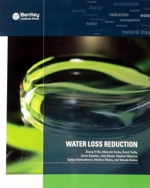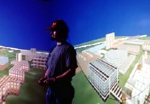
Friday, July 22nd, 2011
Building Information Modeling (BIM) is replacing Computer Aided Drafting (CAD) as the tool in which building designs are created. BIM is a graphic and data model of a building prepared by designers, enhanced by builders, and can be used by owners. BIM enables all parties involved in a project to communicate in a more collaborative

Thursday, July 21st, 2011
The 5th Geoinformatics Forum (July 5-8 2011), co-located with the highly regarded annual German language conference on Applied Geoinformatics (AGIT), was once again organized by the Centre of Geoinformatics (Z_GIS) at the University of Salzburg, the Institute for GIScience at the Austrian Academy of Sciences and the German University of Technology in Muscat, Oman.

Monday, July 18th, 2011
In recent years, EPCOR Water Services of Edmonton, Alberta, Canada has run highly visible city-wide water conservation campaigns. EPCOR Water serves 1 million customers with 240,000 fully metered service connections, 2 water treatment plants, and 3,500 km of pipeline. Along with raising water conservation awareness, the campaigns were specifically designed to reduce summer demand. Limited

Wednesday, July 6th, 2011
Water is a valuable resource. As the world population continues to grow and urban development continues to expand, cities are expanding and water infrastructure is demanding greater attention. Leakage is a primary contributor toward water loss. As a result, water agencies, engineers, urban planners and officials are developing strategies to deal with this problem. Leakage

Tuesday, June 28th, 2011
The assignment of novel educational and research tasks brings the certainty that Europeans will be part of a new era of the utilization of “Culture”: an era with broader exploration ambitions in “research and education” for the CITHM (Culture, Innovation & Technologies for Heritage Management) in Mediterranean Regions. “The Risk of Education explores what is
Monday, June 27th, 2011
On September 9, 2010, a gas transmission pipeline rupture in San Bruno, California, killed eight people and caused extensive property damage. The subsequent National Transportation Safety Board (NTSB) investigation revealed that some records in the operator’s Geographic Information System (GIS) were inaccurate. The finding is significant because federal law requires pipeline operators to perform data-driven
Sunday, June 26th, 2011
There is a difference between the cities that we live in today and those that we need to be living in. Editors R. Klanten and L. Feireiss include images and concepts about architecture, city planning, urbanism and other representations that challenge our thinking about current cities. A triad of architecture, mobility and energy is expanded upon, and

Sunday, June 19th, 2011
Water is an invaluable resource; already in 1992 it took centre stage at the first international conference of the United Nations on environmental protection and sustainability. The United Nations have declared the years 2005 to 2015 to be the international “Water for Life” Decade.
Sunday, June 19th, 2011
The 2nd International GIS for Rail Summit was recently held in Paris, France. This Esri organised event was sponsored by the International Union of Railways (UIC), a confederation of 197 worldwide members from 5 different continents. The event provided an opportunity for the participants to share interests, discuss issues and to learn about member initiatives

Thursday, June 16th, 2011
The concepts of integration, complementarity and coordination are particularly important especially in the field of railway infrastructures. The requirements of the associated interventions are very technical in nature and involve multiple specialties and technologies, and the final result is only guaranteed if the various components of this interwoven puzzle are compatible and properly joined together.